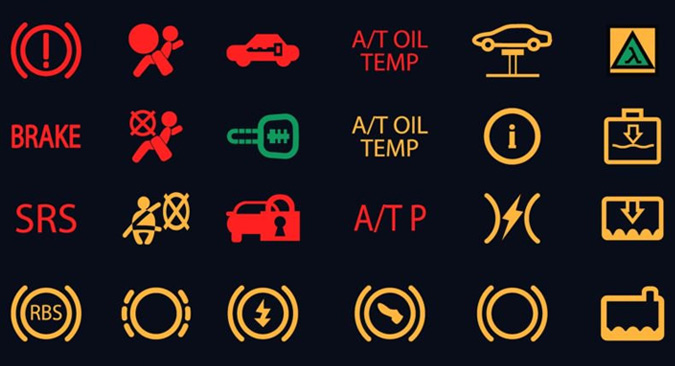Understanding The Helpful Car Dashboard Indicators
Car dashboard Indicator are essential indicators that provide vital information about the status and health of your vehicle. They serve as alerts for everything from routine maintenance needs to critical malfunctions. Understanding these dashboard lights is crucial for any driver, as they can help prevent serious issues down the road. This article explores the meaning of various dashboard lights, their significance, and what actions you should take when they illuminate.

Index
The Importance of Dashboard Indicator
Dashboard lights are not merely decorative elements; they are integral to vehicle safety and functionality. Each light serves a specific purpose, providing real-time feedback about the car’s performance and condition. Ignoring these warnings can lead to severe consequences, including mechanical failure, increased repair costs, and safety hazards. By understanding what each dashboard light signifies, you can take appropriate actions to ensure your vehicle remains in optimal condition.
Common Dashboard Indicator and Their Meanings
Dashboard lights can vary by make and model, but many symbols are universally recognized. Here are some of the most common dashboard lights you may encounter while driving:
- Check Engine Light: This light is one of the most recognized symbols on any dashboard. It can indicate a wide range of issues, from minor problems like a loose gas cap to serious engine malfunctions. If this light comes on, it’s advisable to check your vehicle’s diagnostic codes using an OBD-II scanner or consult a professional mechanic.
- Oil Pressure Warning: When this light illuminates, it signals that the oil pressure in the engine is low. This can be caused by low oil levels, a faulty oil pump, or an oil leak. Ignoring this warning can lead to significant engine damage, so it’s essential to check your oil levels immediately.
- Battery Warning Light: This light indicates a potential issue with the vehicle’s charging system. It could mean that the battery is not charging correctly, there is a problem with the alternator, or the battery itself is failing. If this light stays on while driving, it’s crucial to seek professional help.
- Temperature Warning Light: This light indicates that the engine is overheating. Overheating can cause severe damage to the engine, so if this light appears, it’s essential to stop the vehicle immediately and allow the engine to cool down. Checking the coolant levels and inspecting for leaks may be necessary.
- Brake Warning Light: This light can indicate several issues, such as low brake fluid levels, worn brake pads, or an engaged parking brake. If this light comes on while driving, check if the parking brake is engaged and inspect your brake fluid levels. If the problem persists, have the braking system checked by a professional.
- ABS Light: The Anti-lock Braking System (ABS) light warns of issues within the ABS. While you can still drive without ABS, the braking system may not perform optimally. It’s advisable to have the system checked to ensure your brakes function correctly.
Additional Dashboard Indicator Lights to Know
In addition to the common lights mentioned above, there are several other dashboard lights that drivers should be familiar with:
- Tire Pressure Monitoring System (TPMS): This light illuminates when one or more tires are under-inflated. It’s essential to check your tire pressures regularly, as driving on under-inflated tires can lead to poor fuel efficiency and increased wear.
- Airbag Warning Light: This light indicates a problem with the airbag system, which may prevent the airbags from deploying in the event of a collision. If this light is on, seek professional assistance to ensure the safety of your vehicle.
- Fuel Warning Light: This light serves as a reminder that the fuel level is low. It’s a good practice to refuel your vehicle before the tank is critically low to avoid running out of gas.
- Engine Oil Life Light: This light indicates that it’s time to change the engine oil based on the manufacturer’s recommended intervals. Regular oil changes are vital for maintaining engine health and performance.
- Service Vehicle Soon: This light is a reminder that routine maintenance is due, such as an oil change, filter replacement, or other scheduled services. Following the manufacturer’s maintenance schedule can help extend the life of your vehicle.
Diagnosing Dashboard Indicators
When a dashboard light illuminates, it’s essential to diagnose the issue promptly. Here are some steps you can take:
- Consult the Owner’s Manual: Your vehicle’s owner’s manual will have specific information about what each dashboard light means and any recommended actions. This is a valuable resource that can help you understand the significance of the warning.
- Use an OBD-II Scanner: If the check engine light comes on, an OBD-II scanner can retrieve diagnostic trouble codes (DTCs) that provide insight into the issue. Many auto parts stores offer free diagnostic services, or you can purchase a scanner for personal use.
- Perform Visual Inspections: Regularly inspect your vehicle’s fluid levels, such as oil, coolant, and brake fluid. Checking tire pressures and looking for leaks can also help identify potential problems before they become severe.
- Seek Professional Assistance: If you’re unsure about the meaning of a dashboard light or how to address it, don’t hesitate to consult a qualified mechanic. They have the tools and expertise to diagnose and fix problems accurately.
The Impact of Ignoring Dashboard Indicators
Ignoring dashboard lights can lead to serious consequences. For example, a warning light for low oil pressure may indicate that your engine is not getting enough lubrication. Continuing to drive under these conditions could result in catastrophic engine failure, leading to costly repairs or even complete engine replacement. Similarly, overlooking brake warning lights can jeopardize your safety and that of others on the road.
In many cases, addressing dashboard light warnings early can save you significant money and stress in the long run. Routine maintenance and prompt attention to warning signs can prolong the life of your vehicle and enhance its overall performance.
Conclusion
Understanding car dashboard lights is crucial for any driver. By familiarizing yourself with the various warning indicators, you can take proactive steps to maintain your vehicle and ensure your safety on the road. Remember that these dashboard lights are designed to help you; ignoring them can lead to costly repairs and dangerous situations.
Make it a habit to regularly check your dashboard lights and follow your vehicle’s maintenance schedule. By doing so, you will be better equipped to keep your car running smoothly and efficiently.
